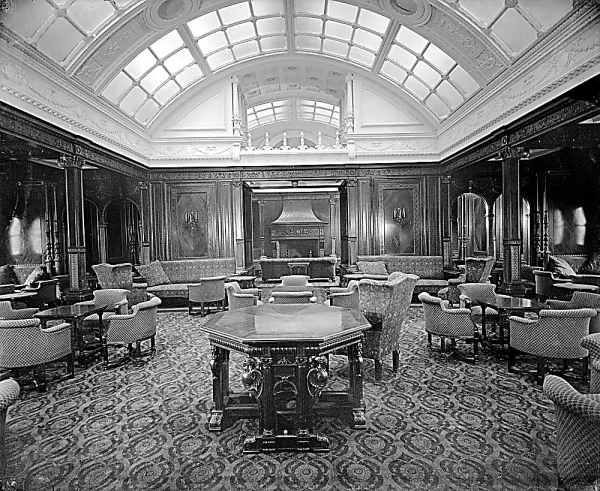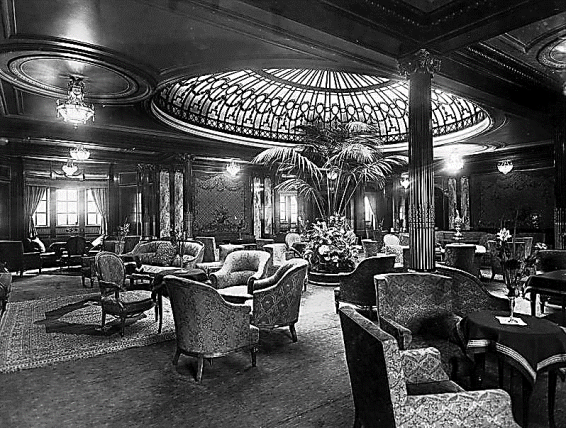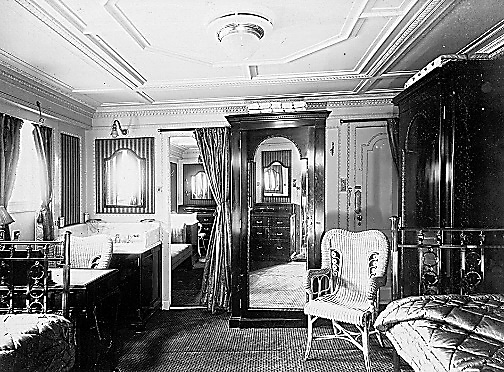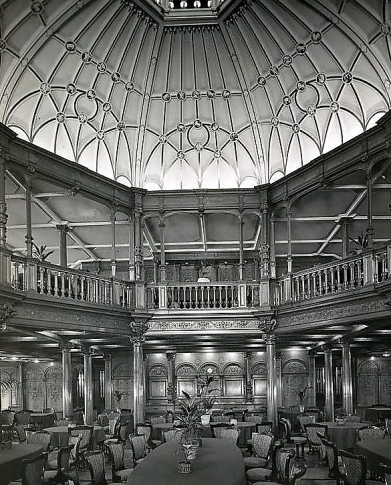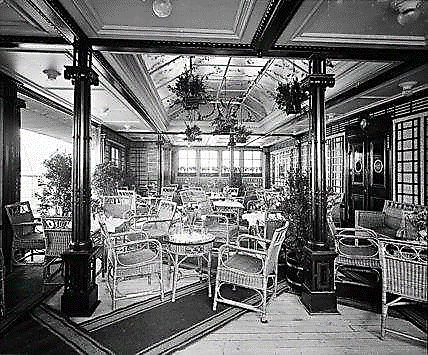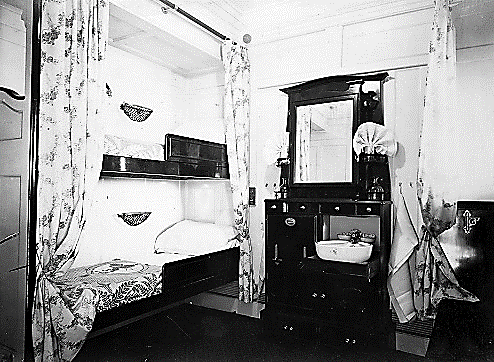RMS Mauretania (1906)
Introduction
In time of war, the requisitioning of liners was common practise. Their size and structure made them ideal to transport sick and wounded soldiers from enemy lines back home.
77 military hospital ships were requisitioned between 1914 and 1917. The luxurious liners had their grand interiors adapted to become hospital wards. Their fixtures and fittings were carefully removed and placed in storage until the ships were released from the service of the Admiralty. Once the ships were handed back to their owners, their interiors were restored.
The Hague Conference (1907) stipulated that hospital ships would be granted immunity from enemy attack. They were painted in such a way that they were recognised as such rather than normal military vessels. Their hulls were painted white with a green stripe painted horizontally across the side together with two conspicuous red crosses, one at each end.
Construction of RMS Mauretania
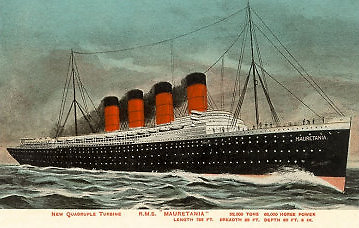
She was designed by the distinguished naval architect, Leonard Peskett OBE and built by Swan Hunter & Wigham Richardson at Wallsend under yard number 735. Her keel was laid down on 18 August 1904. She was launched and christened on 20 September 1906, by the Duchess of Roxburghe. Her name “Mauretania” originated from a Berber Kingdom on the coast of North Africa.
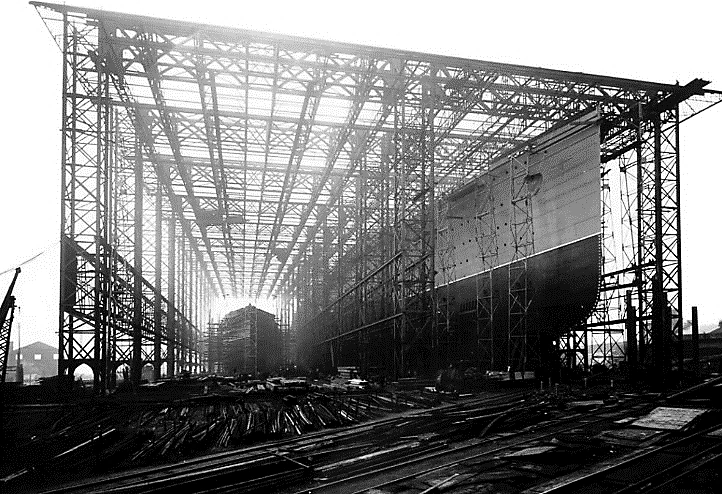
She was 790 feet long with a beam of 88 feet and had a gross tonnage of 31,938. She had 8 decks and could average a speed of 24 knots. She could carry 2165 passengers; 563 First Class, 464 Second Class, 1138 Third Class and 802 crew.
Cunard wanted to regain dominance of the shipping routes.
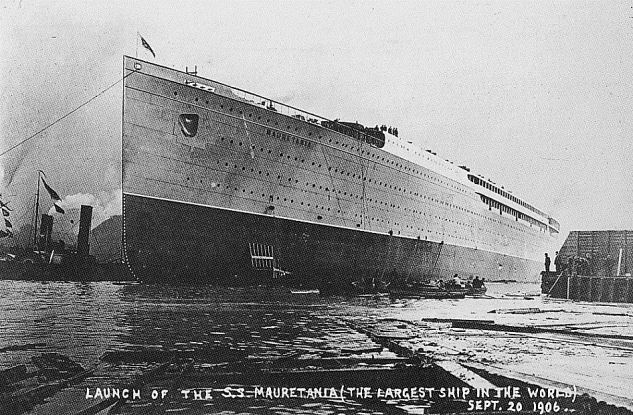
The RMS Campania and RMS Lucania had lost the Blue Riband to the German liner Kaiser Wilhelm Der Grosse.
Cunard agreed with the British government to build two “superliners” – the Mauretania and Lusitania. The British government loaned Cunard £2.6m to be repaid over 20 years with a rate of interest of 2.5%. A stipulation included in the agreement provided that they could be requisitioned by the government and converted into armed merchant cruisers during war times.
The Mauretania departed from Liverpool on her maiden voyage to New York on 16 November 1907, under the command of Captain John Pritchard. She captured the Blue Riband on her return journey from New York.
In December 1911, the Mauretania broke away from her moorings and suffered damage. Her voyage to New York was cancelled and Lusitania did the run instead. King George V and Queen Mary had a guided tour of the ship on 11 July 1913.
Career of RMS Mauretania
Between 1907 and 1914, the Mauretania serviced the transatlantic route from Southampton to New York. During the First World War, she was requisitioned by the British government to become an armed merchant cruiser and was painted battleship grey.
In May 1915, she was ordered to serve as a troop ship ferrying troops to the Gallipoli Campaign. After the tragic loss of the Lusitania, the Mauretania was refitted as a hospital ship and became the HMHS Mauretania. She was able to transport 2000 patients at any one time. Her war time service ended on 25 January 1916.
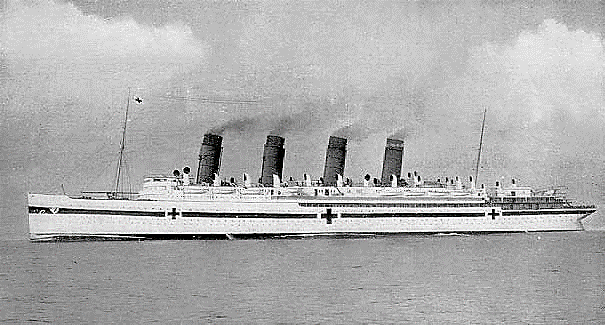
In 1919, she resumed service for Cunard but her refit was delayed until 1921 because her commercial schedule did not permit time off. She returned to active service in 1922. Her engines were converted from coal burning to oil. It was found that she was not as fast as before, so her engines were stripped and overhauled.
In 1928, the SS Bremen, broke the Mauretania’s speed record which Cunard wanted to recover. Her engines were adjusted again but they proved not good enough for the new technology installed in modern ships like the Bremen.
The Wall Street Crash of 1929 led to the reduction of voyages. The Mauretania became a cruise ship in 1933.
When Cunard and the White Star Line merged in 1934, she was withdrawn from service after her last cruise in September. The RMS Queen Mary would replace her.
In May 1935, her fixtures and fittings were auctioned off by Hampton and Sons and on 1 July, she sailed to Rosyth to be dismantled and scrapped.
Interior of RMS Mauretania
The Mauretania's interiors were designed by Harold Peto and her public rooms were fitted out by two notable London design companies: Ch. Mellier & Sons and Turner and Lord to suit Edwardian tastes. No expense was spared: with twenty-eight different types of wood, marble, tapestries, and other furnishings such as, the stunning octagon table in the Smoking Room, being used.
The following photographs illustrate why the Mauretania was considered to be the most successful and graceful Edwardian-era passenger liner ever built.
